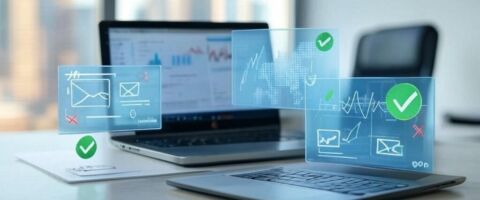
By David Battson 3 min read

One of the best ways to grow your customer database is to purchase B2B data; mailing lists, email data or contact numbers. It allows you to reach targeted prospects at scale – but it must be done correctly to avoid disappointment.
Here I look at some dos and don'ts to consider when purchasing B2B prospect data and mailing lists:
- DO: Understand who you are purchasing from to ensure the legitimacy of the data. Make sure you are purchasing from a reputable and reliable provider. Check their website, read reviews, and ask for references to verify that they are a legitimate company with a track record of delivering high-quality data.
- DO: Look for providers that can offer deeper and richer ways to select your audience. Identify the specific data points that are most important to your business and ensure that the provider is able to provide this information. Some examples may include company size, industry, location, and job title.
At Data HQ with our VistaTM database we have taken this a step further and hold a wide range of variables including, floor space, premise type, size of car park, Import & Export flags and many more. This has enabled us to help clients reach really niche data sets – whether it be pubs that had outdoor space during the pandemic to companies with more than 10 parking spaces that may need salt during cold snaps!
The deeper the data the more accurately you can ask your provider to carry out propensity models to select the records most likely to convert. Propensity modelling moves away from the descriptive lines data providers often use to segment data and accurately predicts on each record the likelihood of that record converting – the deeper the data the more accurate the model. - DO: Request a sample to verify the data… accuracy is crucial It's important to ensure that the data you are purchasing is accurate and up to date. Ask the provider about their data sources and how often they update their lists to ensure that you are getting the most current and accurate information. Reputable data suppliers will be more than happy to provide a sample for you to check.
- DO: Beware of cheap data sources. Quality data can be expensive. Determine your budget and set limits on how much you are willing to spend on data. Keep in mind that high-quality data can be more expensive, but it is likely to be more valuable in the long run. If data is supplied cheaply then there may be questions to answer on its recency, accuracy, legitimacy etc.
- DO: Ask the supplier for information on how they comply with the GDPR. the GDPR does make allowances for the use of purchasing B2B data to grow your campaigns and processing data for marketing has been defined by Recital 47 as a legitimate interest. However, there are still certain requirements, such as not emailing sole traders and unincorporated partnerships. Speak to your supplier about their compliance and how they ensure this.
- DON’T: Rush into buying from unknown or untrustworthy sources. Be wary of companies that are not transparent about their data sources or who offer unusually low prices. These providers may be selling outdated or inaccurate data, which can be a waste of your time and money.
- DON’T: Buy data for the sake of it. Don't waste your money on data that is not relevant to your target market. Make sure that the provider can provide data on the specific types of companies and individuals that you are trying to reach.
Speak to your supplier about propensity modelling as described in point 2 above to make sure the data you are buying is relevant. It is better to spend some time and energy getting the right list than just hoping for the best. - DON’T: Forget the recipients are human and treat them as such. Consider how you will use the data. Don’t just license the data and start bombarding the prospects with sales emails and calls. Treat the prospects as individuals and with respect – think about frequency and what you are sending. Look at how to nurture leads to prospects as opposed to fire and forget sales messaging.
Purchasing B2B prospect data and mailing lists can be a useful strategy for reaching new potential customers, but it's important to approach this process with caution and follow best practices.
By doing your research, verifying the accuracy and relevance of the data, and following privacy laws, you can ensure that you are getting the most value from your investment.
Related blogs and ideas
Explore more ideas
Let us open your mind to new possibilities
Our stories and ideas direct to your inbox





